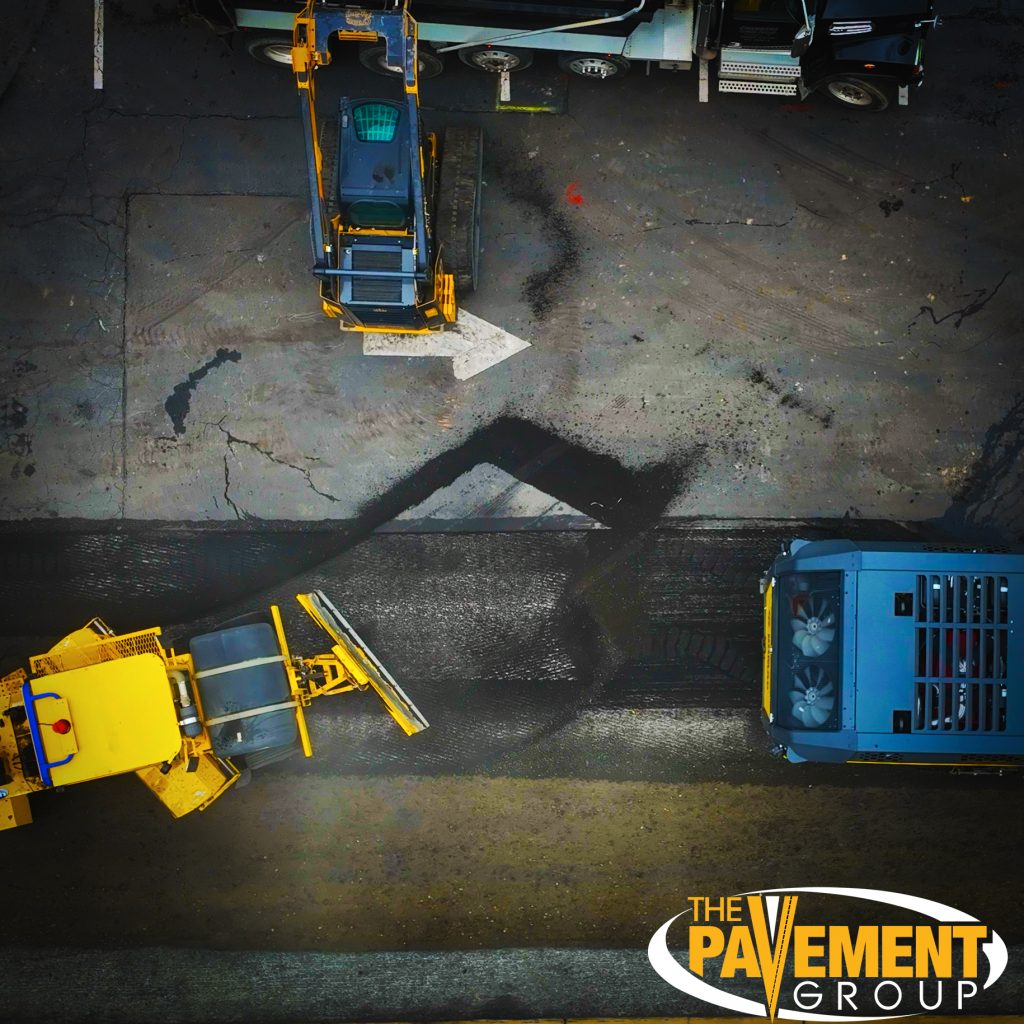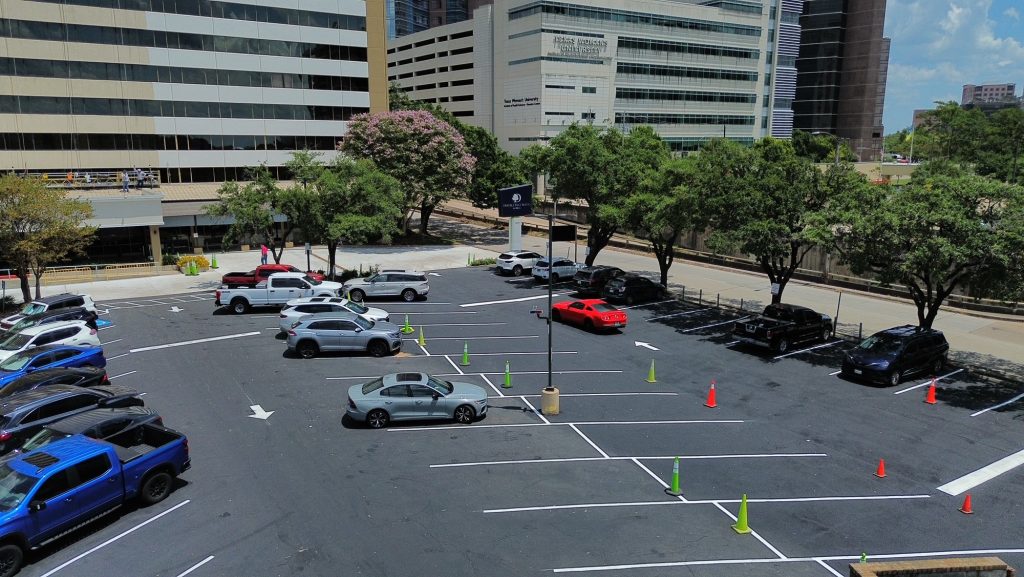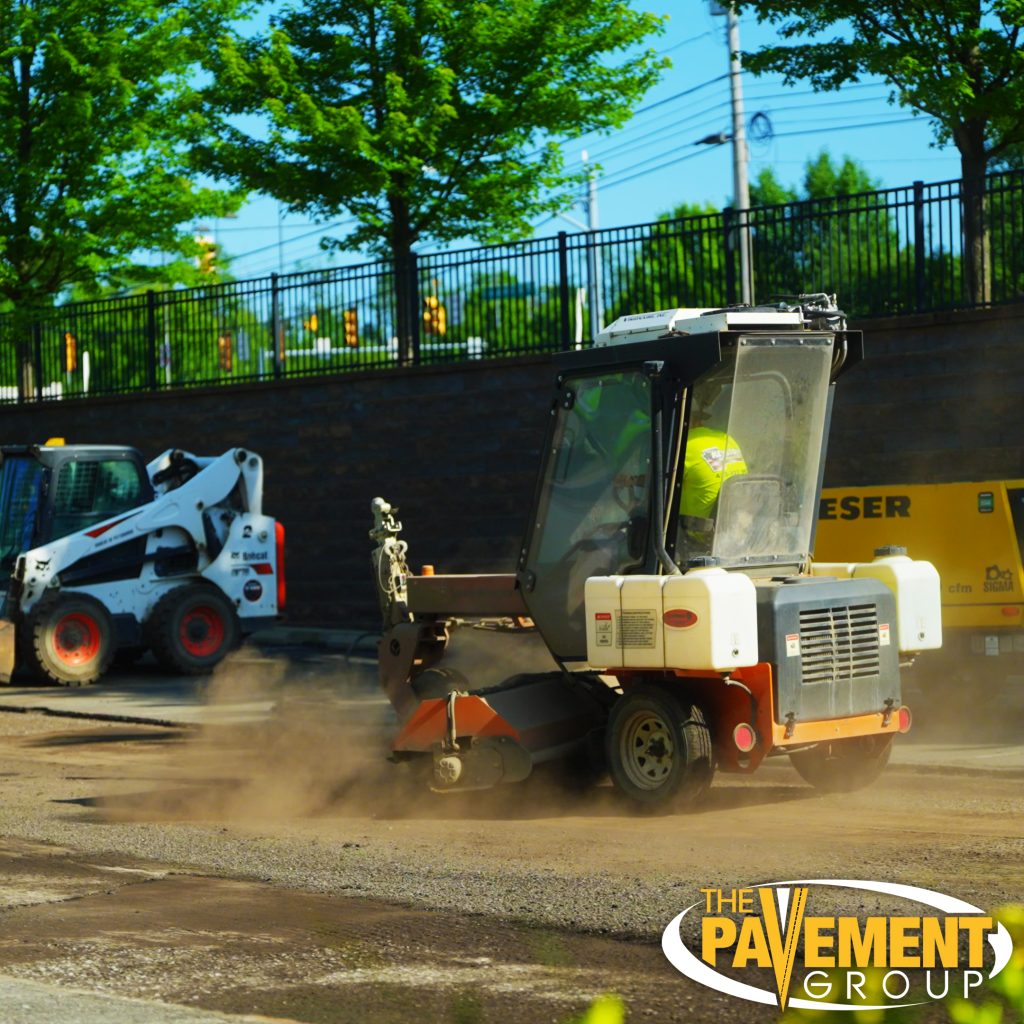When customers visit your retail property, the experience starts long before they step through your doors. It begins in the parking lot. The first impression zone. Cracked asphalt, potholes, and faded striping might seem minor, but they speak volumes about your business. Everyone can notice the poor pavement in your retail.
Poor pavement conditions can frustrate visitors, damage vehicles, and even deter potential customers from returning. In a competitive retail environment, appearance, accessibility, and safety are everything. Maintaining quality pavement isn’t just about looks. It’s about brand perception and customer loyalty.
The Connection Between Pavement and Customer Experience
Retail is all about experience. Every detail, from storefront design to parking lot layout, influences how customers feel. When the pavement outside your store looks neglected, it signals a lack of care inside too.
Customers often associate poorly maintained parking areas with poor service or outdated management. A smooth, well-marked surface, on the other hand, sends the opposite message. It says, “We care about you.”
Think of pavement as part of your brand identity. It’s the silent greeter that welcomes every guest, guiding them safely and comfortably to your business.
First Impressions Begin at the Curb
The moment a shopper drives in, they’re judging what they see. Uneven pavement, crumbling edges, or confusing traffic flow can immediately create frustration.
If parking is difficult or unsafe, customers may decide to shop elsewhere. Studies show that visual appeal and ease of access heavily influence retail choices.
Maintaining clean, smooth, and well-marked pavement isn’t just for curb appeal. It’s a powerful marketing tool. When visitors feel safe and accommodated, they’re more likely to stay longer and spend more.
Safety (The Foundation of Customer Trust)
Beyond appearance, safety is a major factor in retail satisfaction. Uneven pavement and potholes can create serious hazards.
Customers walking with children, elderly shoppers, or those with mobility challenges face the highest risk of tripping or falling. Vehicle damage from potholes also leads to complaints and potential claims.
Businesses can avoid these costly situations by scheduling regular pavement inspections and maintenance. Smooth, slip-resistant surfaces show that you prioritize customer well-being. a cornerstone of brand trust.
Accessibility Matters More Than Ever
Today’s consumers expect easy navigation, from entry to exit. Pavement that doesn’t meet ADA (Americans with Disabilities Act) standards can discourage customers and lead to legal issues.
Accessible parking spaces, ramps, and clear pathways ensure everyone feels welcome. Proper pavement grading and striping make your property inclusive and compliant.
Retailers that invest in accessibility upgrades not only meet regulations but also enhance community reputation. It’s a smart way to show care for all customers.
The Financial Cost of Neglected Pavement
Ignoring pavement maintenance might save money today, but can cost much more tomorrow. Small cracks expand, water seeps in, and damage multiplies.
Repaving large sections of asphalt is significantly more expensive than preventive care. Regular sealcoating, crack filling, and resurfacing protect your investment and extend pavement life.
Well-maintained pavement also helps retain tenants in shopping centers. Retailers prefer properties that look professional, function efficiently, and attract consistent foot traffic.
“We Didn’t Realize How Much It Mattered”
“Our store used to lose customers during rainy days because the lot would flood near the entrance. After resurfacing and installing better drainage, customer complaints disappeared. Sales even increased within a few months. We learned that pavement really does affect how people view your business.”
— Lindsey M., Retail Manager, Boise, ID
“The old pavement looked terrible, and people were tripping on cracks. After repairs, the whole property feels new again. Customers comment on how much better it looks, and we’ve seen a noticeable boost in traffic.”
— Derrick S., Shopping Center Owner, Spokane, WA
These stories show how small improvements outside can lead to major changes inside. When you invest in your property, customers notice—and they respond positively.
The Role of Pavement Maintenance Plans
Creating a regular pavement maintenance plan keeps your property safe, clean, and attractive year-round. Routine care prevents minor issues from escalating into major repairs.
Key maintenance services include:
- Sealcoating to protect surfaces from weather and chemicals.
- Crack filling to stop water damage.
- Line striping to improve navigation and safety.
- Sweeping and cleaning to maintain a polished appearance.
Partnering with a professional pavement service ensures consistency and quality. They can inspect your property, create a maintenance schedule, and handle issues before they escalate.
Environmental and Sustainability Factors
Modern pavement practices also focus on sustainability. Using eco-friendly materials, recycling asphalt, and improving drainage systems help reduce environmental impact.
Customers are increasingly drawn to brands that prioritize green initiatives. By maintaining sustainable pavement, retailers can appeal to eco-conscious shoppers and strengthen brand reputation.
Well-designed drainage and permeable pavement options also prevent runoff, protecting local waterways and minimizing flooding risks. Sustainability isn’t just good for the planet. It’s good for business.
Customer Experience Beyond the Storefront
Think about every step your customer takes. From their car door to your entryway. Smooth pathways, visible crosswalks, and clear signage make the journey effortless.
When the customer’s experience is seamless, they associate that feeling with your brand. Consistency builds loyalty, and loyal customers return again and again.
Retail success depends on how well you connect with people, both inside and outside your store. Pavement plays a bigger role in that connection than most realize.
Investing in Pavement Is Investing in Your Brand
Pavement may not seem exciting, but it’s a powerful business tool. Every detail of your property tells a story about your brand’s values.
Cracked asphalt whispers neglect. Fresh pavement speaks professionalism. Which message would you rather send?
Investing in pavement maintenance improves safety, enhances appeal, and keeps customers coming back. It’s a practical way to boost your retail experience without changing a single product inside your store.
Your Lot Deserves a Makeover. Your Customers Deserve the Best!
Don’t let cracks and potholes ruin that first impression.
Schedule a professional pavement inspection today and discover how simple maintenance can transform your retail space.
Because every happy customer starts with a smooth arrival. Every successful business starts with attention to the details that matter most.
Frequently Asked Questions
1. How does a retail store’s parking lot condition impact a customer’s first impression?
A retail parking lot is the first physical point of contact a customer has with your business and immediately sets a perception of quality. A cracked, potholed, or faded parking lot can signal neglect and poor standards before the shopper even walks through the door. Conversely, a well-maintained lot shows you care about your business and your customers’ experience.
2. What are the key safety concerns with poor retail parking lot pavement?
Poor pavement conditions create significant safety hazards like potholes, cracks, and uneven surfaces that can lead to trips and falls. These defects can also cause vehicle damage, such as flat tires or alignment issues, which increases liability risks for the business. Ensuring a smooth, well-maintained surface is essential for protecting both customers and their vehicles.
3. Can poor parking lot maintenance actually drive customers away from a retail store?
Yes, a poorly maintained retail parking lot may drive customers away, especially when they have alternative shopping options available. When a parking area is inconvenient, unattractive, or unsafe, customers may choose to shop with a competitor who offers a better and more pleasant experience. About 40% of motorists in the U.S. will avoid shops where parking is perceived as challenging.
4. How do damaged parking lot lines and poor traffic flow affect the customer experience?
Worn or poorly designed parking lot lines and layouts create confusion and frustration for customers, negatively impacting their experience. Faded line striping can lead to poor traffic flow, congestion, difficulty finding accessible spots, and an increased risk of minor collisions on the property. Clear, fresh line striping makes navigation simple and signals professional management.
5. What does the exterior appearance, including the pavement, communicate about the retail brand?
The exterior, including the pavement, forms a crucial part of your brand’s curb appeal and professionalism. Customers often assume that if a business neglects its outside environment, the quality of its products and services inside may also be lacking. A clean, polished exterior and well-kept lot inspire greater customer confidence and trust in the business.
6. Does poor drainage in a retail parking lot contribute to pavement damage and customer dissatisfaction?
Yes, poor drainage is a major contributor to pavement damage, and the resulting issues frustrate customers. When water pools due to improper slope or drainage systems, it seeps into the asphalt, weakening the structure and leading to crack and pothole formation. Standing water itself is a safety hazard and an unsightly nuisance for customers walking to the store entrance.
7. How often should a retail parking lot be repaved to maintain a good customer experience?
Most retail parking lots last 15 to 20 years, depending on traffic volume and climate, but this lifespan relies on proactive maintenance. Regular care, such as sealcoating every 2-3 years and timely crack repair, can significantly extend the pavement’s life. Delaying essential maintenance will lead to accelerated deterioration, resulting in a poor customer experience and more expensive full repaving sooner.
8. What are the legal compliance issues tied to neglected retail parking lot pavement?
Neglected parking lots can lead to Americans with Disabilities Act (ADA) compliance issues if accessible spaces or required slopes are not properly maintained and marked. Potholes and uneven surfaces can also increase the business’s legal liability risk from potential slip-and-fall injuries or vehicle damage claims. Regular maintenance ensures both customer safety and adherence to federal regulations.
9. Why is a well-paved parking area considered a vital investment for a retail business’s bottom line?
A well-paved parking area is a vital investment because it directly contributes to higher sales and customer retention. A positive first impression, enhanced safety, and greater convenience encourage more foot traffic and make customers more likely to complete a purchase. Brands with outstanding customer experiences generate significantly more revenue than their competitors.
10. What are the immediate signs that a retail parking lot’s poor pavement is negatively affecting customer experience?
Immediate signs that the poor pavement is an issue include customer complaints, visible cracks and potholes, and excessive pooling a water. Faded or illegible line striping that causes parking difficulty is another clear indicator of a declining experience. Addressing these red flags early prevents minor issues from escalating into major repairs and serious customer dissatisfaction.


